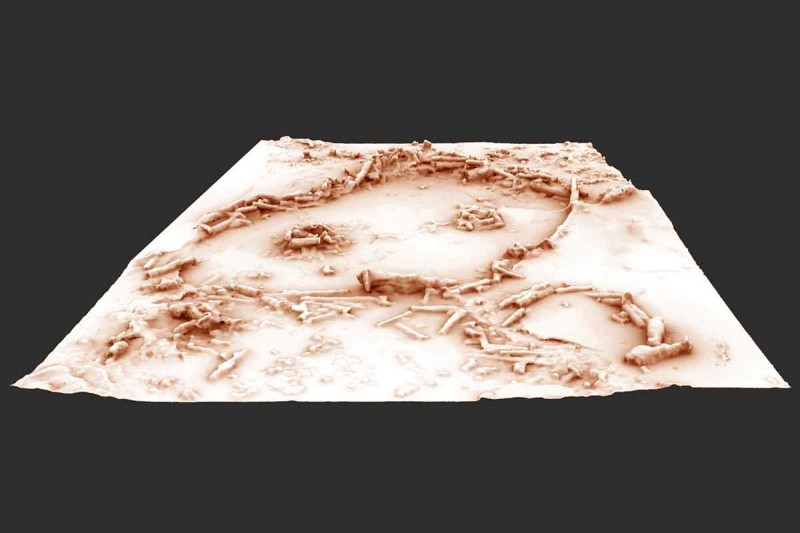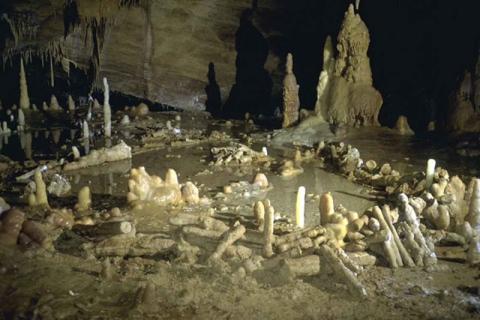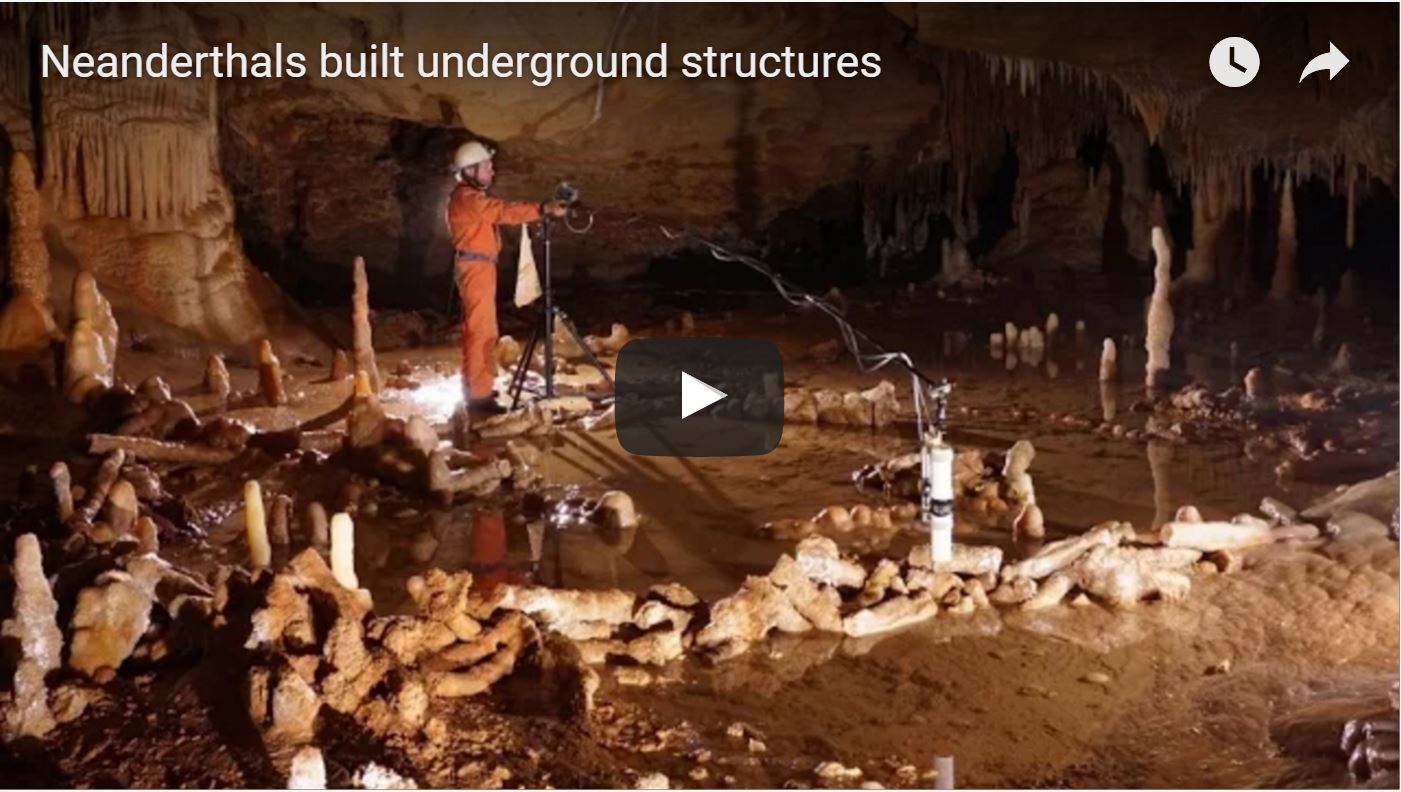[Also watch this short video about the Neanderthal stone circles -- moderator.]
They worked by torchlight, following the same procedure hour after hour: wrench a stalagmite off the cave floor, remove the tip and base, and carefully lay it with the others.
Today we can only guess as to why a group of Neanderthals built a series of large stalagmite structures in a French cave – but the fact they did provides a rare glimpse into our extinct cousin’s potential for social organisation in a challenging environment.
Gone are the days when we thought of Neanderthals as crude and unintelligent.
Archaeological evidence now suggests they were capable of symbolic thought, had a basic knowledge of chemistry, medicine and cooking, and perhaps some capacity for speech. They may even have taught modern humans new artisanal skills when the two species met and interbred.
A reassessment of evidence from Bruniquel cave, near Toulouse in south-west France, suggests even more Neanderthal sophistication. In one chamber, 336 metres from the cave entrance, are enigmatic structures – including a ring 7 metres across – built from stalagmites snapped from the cave floor.
Natural limestone growths have begun to cover parts of the structure, so by dating these growths a team led by Jacques Jaubert at the University of Bordeaux could work out an approximate age for the stalagmite constructions.

A 3D reconstruction of the structures in Bruniquel cave
Xavier Muth - Get in Situ, Archéotransfert, Archéovision -SHS-3D, base photographique Pascal Mora
They are roughly 175,000 years old, which means they easily predate the arrival of modern humans in Europe. They were built at a time when Neanderthals were the only hominins in the region.
The stalagmite structures are 50 centimetres high in places, says Jaubert. They are built from around 400 individual stalagmites with a combined weight of about 2 tonnes.
“That must take time [to shift],” he says – although exactly how long it took the Neanderthals to build the structures isn’t clear. “As often in prehistory, measuring time is not easy.”
What we do know is that the structures were built in dark, challenging conditions and the builders had no natural light to help them. Indeed, Jaubert’s team found traces of fire at several points around and on the structures.
The simplest explanation is that the structures served as some sort of shelter or refuge – perhaps the stalagmite “walls” supported a roof of perishable wood, for example – but there are no other artefacts and very few signs of domestic activity in the chamber beyond the presence of one charred bone fragment that possibly belonged to a bear or large herbivore.
That draws comparisons with much later cave sites such as Chauvet, a 30,000-year-old site of modern human occupation that is rich in cave art but contained a mere handful of artefacts. So perhaps Bruniquel – like Chauvet – served some ritual role. If so it would provide more evidence for the Neanderthal’s capacity for symbolic thought.
Paola Villa at the University of Colorado in Boulder has previously called for Neanderthals to be considered on the same sort of intellectual plane as modern humans. She says the new paper lends weight to her argument.
Villa points out that the Bruniquel cave was actually discovered and studied in the 1990s. Even then, it seemed likely that Neanderthals had arranged the stalagmites, because carbon dating of the single charred bone found at the site suggested the site predated the arrival of modern humans in Europe. But until now few researchers were really aware of the structures’ existence.
This is partly because the previous work wasn’t published in the international scientific literature, but Villa thinks there was another reason the Bruniquel finds were overlooked in the late 90s and early 2000s: mainstream scientific thinking at the time simply rejected the idea of Neanderthals as intelligent and sophisticated.
“ ran against the prevailing and damning views of Neanderthal inferiority compared to modern humans,” Villa says.
Journal reference: Nature, DOI: 10.1038/nature18291



Spread the word